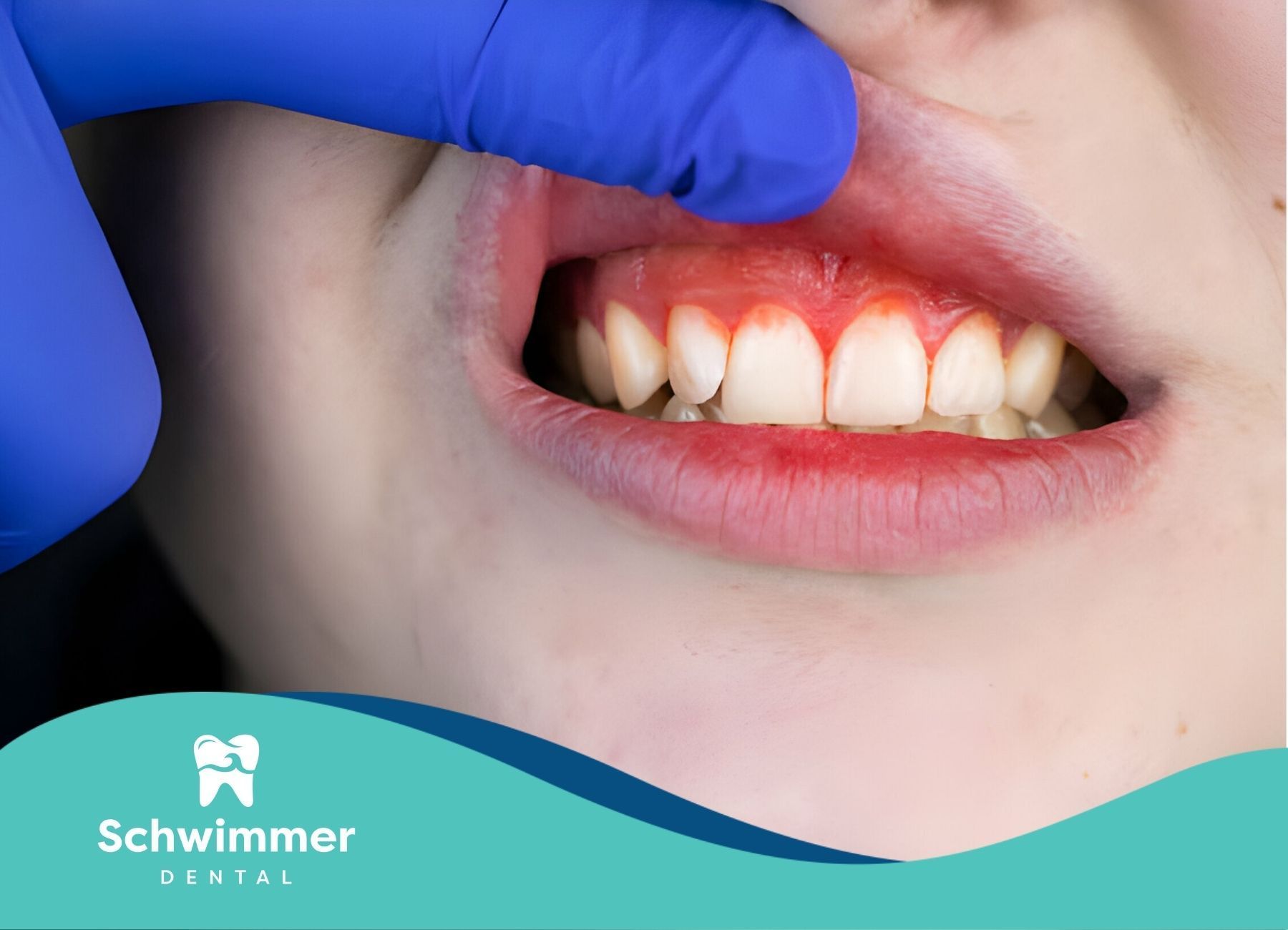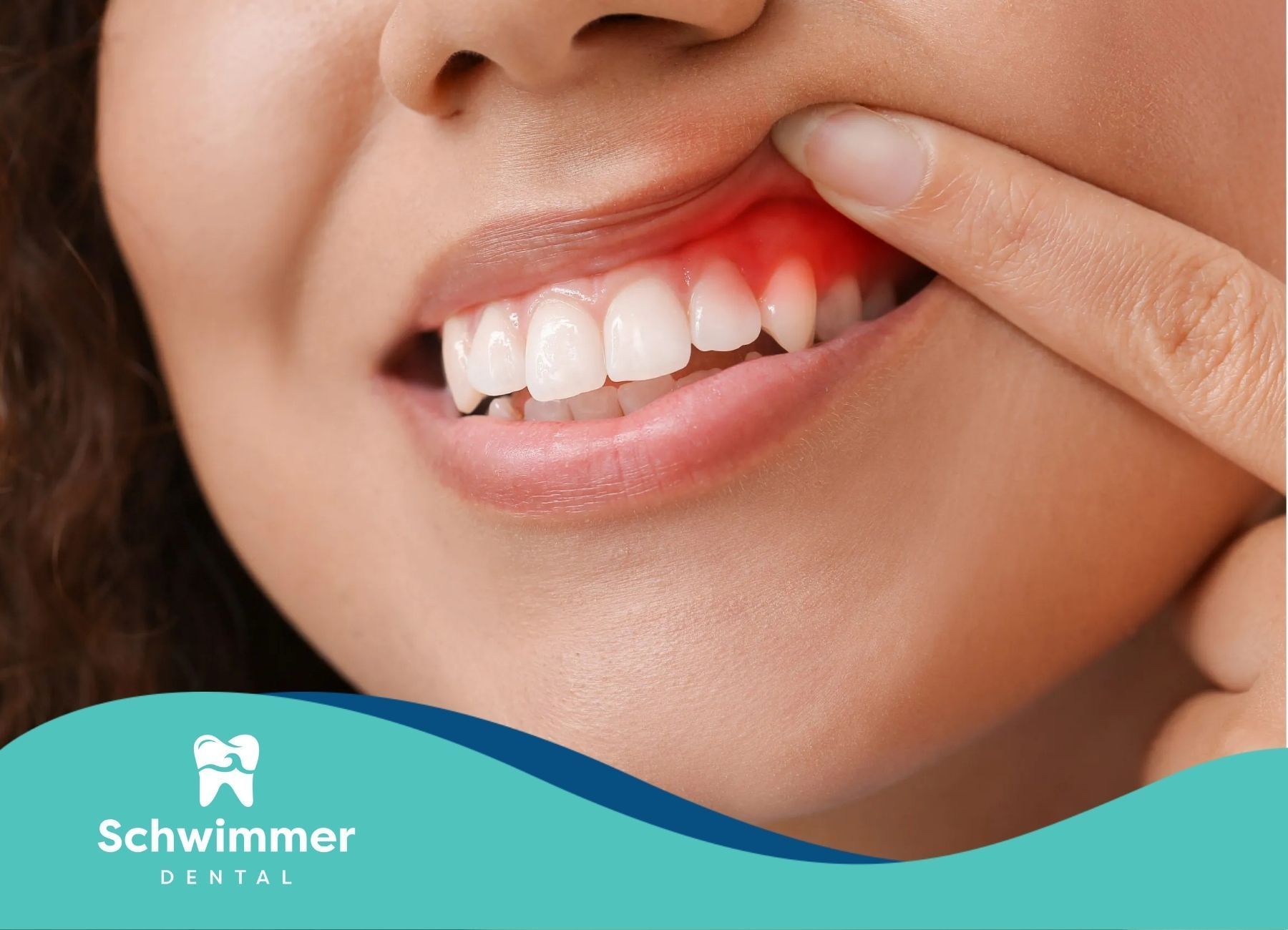Have an appointment? Complete the Intake Form
Dental Crowns: Types, Benefits, and Best Options
Key Highlights
- Dental crowns are caps designed to restore damaged teeth to their original shape, size, and function.
- They offer a long-term solution for decayed, broken, or cracked teeth, and those treated with a root canal.
- Dental crowns come in various materials like porcelain, ceramic, metal alloys, (including gold), and stainless steel.
- Choosing the right type of crown depends on factors such as the location of the tooth, aesthetics, and biting force.
- With proper care and maintenance, dental crowns can last for many years, preserving your oral health and giving you a confident smile.
Dental crowns play a vital role in modern dentistry, offering a durable and effective solution for restoring damaged teeth. Whether you're dealing with a cracked tooth, post-root canal recovery, or simply looking to enhance your smile, dental crowns are here to help. With various materials available, from gold to porcelain, each type offers unique benefits tailored to your needs.
Understanding Dental Crowns and Their Importance
Imagine your natural tooth as a beautifully structured house. Now, picture that house with a damaged roof or weakened walls. Just like a house needs repairs, a damaged tooth needs reinforcement.
This is exactly where dental crowns step in. They act as a protective shield, enveloping the entire visible portion of your tooth. By doing so, they not only restore the tooth's strength and functionality but also enhance its appearance, ensuring it blends seamlessly with your natural smile.
The Role of Dental Crowns in Oral Health
Dental crowns are considered an integral part of restorative dentistry. Their main goal is to bring back your teeth to their former glory, ensuring you can chew, speak, and smile with confidence.
But their significance goes beyond just aesthetics. A dental crown can help prevent further damage to a weakened tooth. It acts as a barrier against bacteria, preventing further decay and the potential need for more extensive procedures down the line.
In essence, dental crowns contribute significantly to your overall oral health, allowing you to maintain a functional and beautiful smile for years to come.
When Do You Need a Dental Crown?
While regular dental check-ups and good oral hygiene are the foundation of healthy teeth, there are times when a tooth requires more than just a filling. If you have a broken tooth that's causing discomfort, or if tooth decay has significantly compromised the structure of your tooth, your dentist might recommend a dental crown procedure.
Additionally, dental crowns are often necessary after root canal treatment. Since a root canal removes the inner pulp of a tooth, which can make the tooth brittle, a crown provides the necessary strength and protection to prevent future fractures.
In some cases, even purely for cosmetic purposes people choose to have dental crowns. Severely discolored or misshapen teeth can be effectively masked with dental crowns, resulting in an improved smile and boosted confidence.
Comprehensive Guide to Different Types of Dental Crowns
Navigating options of dental crowns can seem a bit overwhelming with so many different materials available. The important thing to remember is that each type of dental crown comes with its own set of advantages, and the best choice for you will depend on your individual needs and preferences.
From the reliable durability of gold to the natural allure of porcelain, understanding the characteristics of each material helps you make an informed decision that best suits your lifestyle and desired outcome.
Gold Crowns: Durability Meets Tradition
For decades, gold crowns have been a staple in restorative dentistry, known for their exceptional durability and long-lasting performance. Gold crowns are incredibly resistant to wear and tear, making them an ideal choice for back teeth restorations, where biting forces are the strongest. nMade from a blend of gold and other metals, these crowns are incredibly biocompatible, meaning they are unlikely to cause allergic reactions.
However, one of the main drawbacks of gold crowns is aesthetic. The metallic color doesn’t blend in seamlessly with natural teeth, which is why they are often preferred for molars that are not as visible when smiling.
Porcelain Crowns: Aesthetic and Functional Excellence
If you're looking for a dental crown that flawlessly blends with your natural teeth, porcelain crowns are an excellent choice. The beauty of porcelain lies in its ability to mimic the translucency and natural appearance of tooth enamel.
Porcelain crowns are known for their exceptional aesthetics and are often the preferred choice for front teeth restorations. They are also a good option for people with metal allergies, as they are entirely metal-free.
While incredibly durable, porcelain crowns are not as resistant to fracture as some metal crowns. However, with proper care and attention, they can last for many years, providing both a functional and beautiful solution for restoring damaged teeth.
Ceramic Crowns: Modern Solutions for a Natural Look
Ceramic crowns have gained immense popularity in modern dentistry as a superior alternative to traditional porcelain-fused-to-metal (PFM) crowns. Crafted from advanced ceramic materials like zirconia, these crowns offer the best of both worlds—exceptional strength and outstanding aesthetics.
One of the standout features of ceramic crowns is their ability to match the natural color of your teeth perfectly. The ceramic material is also highly biocompatible, making it a great choice for patients with metal sensitivities.
Furthermore, ceramic crowns are exceptionally resistant to wear and tear, making them suitable for both front and back teeth restorations. Their durability and natural appearance have solidified their place at the forefront of modern restorative dentistry.
Stainless Steel Crowns: Predominantly for Children
Stainless steel crowns, also known as children's crowns, are commonly used in pediatric dentistry to repair severely decayed or damaged baby teeth. These prefabricated crowns are made from durable stainless steel making them resilient enough to withstand the wear and tear of chewing.
Stainless steel crowns are a cost-effective solution for restoring primary teeth, as they are relatively inexpensive compared to other types of crowns. Since they are pre-made, they also require fewer dental visits, making the process quick and easy for young children.
While not aesthetically pleasing as other crown types, stainless steel crowns serve as excellent placeholders, protecting the treated tooth until the permanent tooth emerges.
The Process of Getting a Dental Crown
Getting a dental crown is typically a straightforward procedure that involves a couple of appointments. During your first visit, your dentist will prepare the tooth, take impressions, and fit you with a temporary crown.
The permanent crown will be fabricated in a dental laboratory based on the impressions, ensuring a perfect fit and natural-looking results. Once the crown is ready, you’ll return to the dental office to have it permanently cemented in place.
Initial Consultation and Dental Examination
On your first visit to the dental office for a crown, your dentist will conduct a thorough examination of the affected tooth and surrounding teeth. They will likely take X-rays to assess the extent of the damage or decay and evaluate your overall oral health.
During this initial consultation, be open about your concerns and aesthetic expectations. Your dentist will discuss the different types of dental crowns available, guiding you toward the best option based on your needs and lifestyle.
Once you and your dentist agree on a treatment plan, the process of preparing your tooth for the crown will commence, ensuring a perfect fit and long-lasting result.
Preparing Your Tooth for a Crown
Preparing the tooth for a dental crown involves removing any decayed or damaged tooth structure to create a stable foundation for the crown. Your dentist will carefully reshape the tooth, creating sufficient space for the crown to fit comfortably over it.
Once the tooth is prepared, impressions will be taken using either traditional dental putty or advanced digital scanners. These impressions serve as blueprints for the dental lab technicians who will meticulously craft your custom crown.
While your permanent crown is being made, a temporary crown will be placed over the prepared tooth. This temporary crown protects your tooth and restores some functionality, allowing you to eat and speak comfortably while you await your next appointment.
Fitting and Adjusting Your New Crown
After a couple of weeks, your final crown will be ready, and you’ll return to your dentist’s office for the fitting. Your dentist will carefully remove the temporary crown and then try in the permanent crown.
Before cementing the crown in place, they will check for a comfortable bite and make any necessary adjustments to ensure a seamless fit. Once you and your dentist are satisfied with the fit and appearance, the permanent crown is bonded to the prepared tooth using a strong dental cement.
After the crown is securely in place, your dentist will provide specific care instructions to ensure the longevity of your crown. Following these guidelines meticulously helps prevent future issues and keeps your smile radiant for years to come.
Pros and Cons of Each Type of Crown
Remember, each type of dental crown has its own set of advantages and disadvantages. Gold, known for its durability, might lack in aesthetics, while porcelain, a champion of natural appearance, might require careful attention to avoid chipping.
The key is to find a balance between your desired outcome, budget, and lifestyle. A thorough conversation with your dentist will help you explore the pros and cons of each crown type, leading you toward a well-informed decision.
Evaluating the Longevity and Aesthetics
When choosing the best crown for your needs, consider both longevity and aesthetics. If you're looking for a long-lasting option for a back tooth that endures significant chewing force, metal crowns, or zirconia crowns might be a good choice. However, suppose aesthetics is a priority, especially for a front tooth. In that case, all-porcelain crowns or ceramic crowns offer the most natural-looking results.
The location of the crown also plays a vital role in determining the best material. Front teeth crowns are visible when you smile; therefore, aesthetics is crucial. On the other hand, back teeth crowns require durability to withstand biting and chewing forces.
Considerations for Maintenance and Care
While dental crowns are durable, proper maintenance and care are crucial for extending their lifespan. It’s important to brush twice a day and floss daily, paying extra attention to the gum line around the crown to prevent plaque buildup.
Regular checkups and cleanings at your dentist’s office are equally important. Your dentist can identify any potential issues early on and provide professional cleanings that remove plaque and tartar, which are difficult to remove with regular brushing.
By following these guidelines, you can ensure your dental crown remains in excellent condition, providing you with a confident and healthy smile for many years.
Conclusion
Dental crowns play a vital role in enhancing oral health and restoring damaged teeth. Understanding the different types of crowns, from durable gold to aesthetic porcelain, helps in making informed decisions.
Each type has its advantages and considerations for longevity and maintenance. Whether it's for children or adults, the process of getting a crown involves consultation, preparation, and fitting. Choosing the right material and understanding the longevity of dental crowns are crucial factors.
At Schwimmer Dental, we specialize in providing high-quality dental crown treatments tailored to each patient. Our team is here to guide you through the process, from selecting the best material to ensuring a seamless and comfortable experience. Get in touch with Schwimmer Dental, and let’s work together to give you a confident, healthy smile you’ll love to show off!
FAQs
What are dental crowns used for?
Dental crowns are used to restore and protect damaged teeth, improve their appearance, and prevent further oral health issues.
Which dental crown material is the most durable?
Gold and metal alloys are considered the most durable materials for dental crowns, ideal for back teeth where biting forces are strongest.
How long do dental crowns typically last?
With proper care, dental crowns can last between 10-15 years or even longer, depending on the material and oral hygiene.
Need Assistance? We’re Here to Help
We are dedicated to enhancing your dental health and well-being.
We provide personalized dental care solutions for a confident, healthy smile.
Contact us today for Professional Dental Care.

Our caring staff will help you feel relaxed and comfortable in our state of the art office. We respect your time and pledge to deliver prompt service, backed by the latest knowledge, techniques, and technology.
Email: Office@schwimmerdental.com
Tel: (848) 294-2385
Fax: (732) 899-3347
Address: 1115 Arnold Ave,
Point Pleasant, NJ, 08742
Schwimmer Dental – Website by CWS


